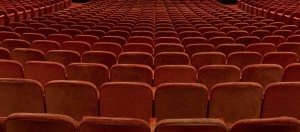You know the drill. Take your seat, don’t move, sit quietly, then applaud enthusiastically only at the appropriate times. Is this prescribed concert behavior the best way to engage audiences? Susan Key—special projects director for the San Francisco Symphony—examines this question.
 There has been a lot of discussion lately in arts circles about the importance of listening to our audiences. For me, the point was underscored by an audience question during our March 17 Forum in San Francisco:
There has been a lot of discussion lately in arts circles about the importance of listening to our audiences. For me, the point was underscored by an audience question during our March 17 Forum in San Francisco:
Sitting in the audience can be a very passive experience. I mean, my head is spinning. I have lots of thoughts going through it. But I’m not supposed to move… the expectation is that we sit. We’re well behaved. …but we’re not supposed to do anything. And I wonder whether on occasion there could be a little bit more—like in rock concerts [when] people get up and dance.
Her question brings up an issue that I think orchestras ignore at their peril: the distance between the multi-textured human experience embedded in the works on our concerts and the human behavior we prescribe for their consumption. (more…)



 “Tweet Seats.”
“Tweet Seats.”